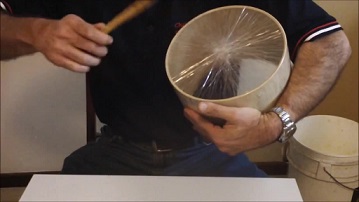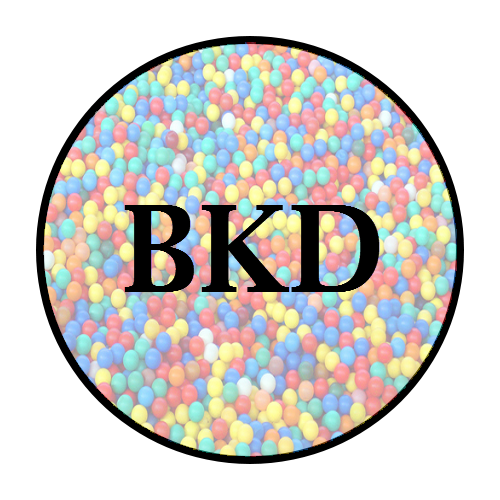Toddlers love to explore the world around them but not just through taking their first steps or trying to put everything in their mouth. Toddlers also can really enjoy music and not just listening to it but making it too!! This being the case we thought we would share this simple guide on how to make a simple drum that your toddler can enjoy 🙂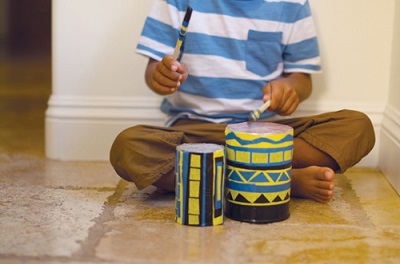
HOW TO MAKE A DRUM FOR A TODDLER
Remember when you were little and your mum tried to make you a drum by stretching a balloon over a tin can and securing it with rubber bands? It was fun, but it really didn’t sound like a drum.
Well, here’s how to make a simple drum for toddlers that sounds just like a REAL drum.
1. You will need some clear packing tape (wide sticky tape), scissors and a sturdy container that is open at both ends. You may also want to decorate your drum with contact, stickers or colorful paper.
2. For the container, you can use a tin with both ends taken off (provided there are no sharp edges), a solid plastic container such as an ice cream or yogurt container or even a bucket with the bottom cut out with a Stanley knife, or a wide piece of PVC pipe.
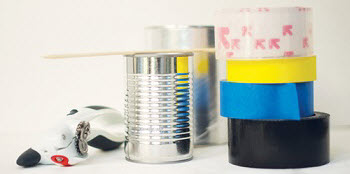
3. Start by stretching a piece of tape tightly across the middle of one open end of the container. Stick the edges of the piece of tape to the sides. Then put another piece of tape across the middle to form a cross.
4. Continue putting tape across the opening of the container until the hole is covered and there are no gaps. Then repeat the process until you have 3 layers of tape across the top forming a fairly solid ‘skin.’ Wrap some tape around the outside of the container to help secure the pieces across the top.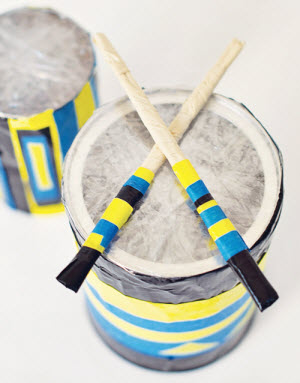
5. Now you’re ready to decorate your drum. Add whatever decorations you want to the outside of the container and voila, your drum is ready to play. Put stickers on it, ribbons or even glitter.
6. There’s one more thing you’ll need though – a drum stick or two. You can use chop sticks, sticks from outside, a wooden spoon, thin dowel or anything else you think would work. Try different sticks and see what gives the best sound. You can also try playing it with your hands.
You may want to turn it into a marching drum by putting holes in the sides and threading some rope through. Tie a knot at each end of your piece of rope inside the drum so that the rope won’t slip out. Make sure you put the holes closer to the top than in the middle so that it balances nicely. Measure the rope with your child to make sure you get a length that is just right for your child to play it while they’re walking.
Your drum will make a different sound when it is played by being held as compared to being playing on a solid surface. Try both ways and experiment with different sounds.
Other things that make great drums are 4 gallon water bottles – the kind you put in water dispensers, pots and pans and empty plastic containers.
Drums are beneficial for children because they help them to learn to keep the beat and to identify rhythm. They are also great for hand-eye coordination, auditory discrimination (listening skills), concentration, self-awareness and sensory awareness. They can also provide a great outlet for emotions and for physical energy!
Toddler Drum Activities
Now your toddler is already to make some music, here are some activities you might like to try with your child!
- Keeping the beat to the music
- Marching around to music with your drum
- Copying – the adult plays a simple rhythm and the child tries to copy. Then let your child create a rhythm and you try to copy it.
- Beat the syllables in the names of people your child knows – ma-ma, Jos-ie, Tim-o-thy. If your child knows how to count, they could also count the number of ‘bangs’ in their name.
- Instead of playing the beat to a song, try playing the rhythm. Nursery rhymes are great for this.
- Create a ‘drum kit’ with your drum and a number of other containers – Tupperware, pots and pans, cardboard boxes and so on. Let your child experiment with all the different sounds.
- Play a game where you play the drum fast or slow and your child tries to move to match the speed. Then let them play and you move around fast or slow as the drum dictates (this is a great workout too).
- Play ‘hot and cold.’ Hide a toy and have your child search for it. When they get closer, play faster and louder. When they move further away, play slower and quieter. You may also need to use words to help give clues.
- Play statues – play a rhythm on the drum and have your child stomp and dance about. When you stop, they have to stop and freeze. Then let them do the same for you.
- Collect some different containers from around the house that are suitable to hit with a drum stick – cardboard box, glass jar, tin can, Tupperware, saucepan etc. Have your child close their eyes while you play a rhythm on one of the containers. Then the child opens their eyes and tries to guess which one you were playing. Then you close your eyes and let them play and you have a turn at guessing.
Now you know how to make a drum and you’ve got lots of ideas for activities to do with your child, let’s get drumming!